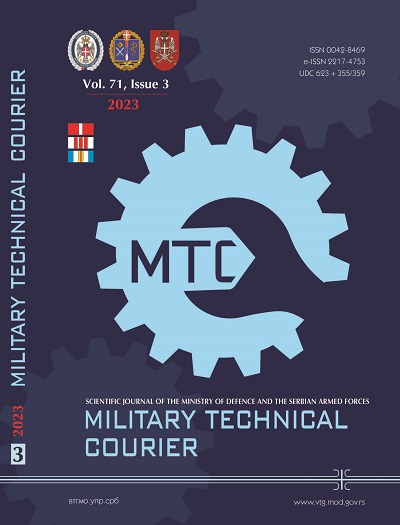Portfolio investment based on probabilistic multi-objective optimization and uniform design for experiments with mixtures
Abstract
Introduction/purpose: In this paper, a new approach to solving the portfolio investment problem is formulated to handle simultaneous optimization of both maximizing the rate of return and minimizing the variance of the rate of return. Probability - based multi – objective optimization is combined with uniform design for experiments with mixtures to conduct processing.
Methods: Preliminarily, probability - based multi – objective optimization is employed to synthesize the bi-objective problem of simultaneous optimization of both maximizing the rate of return and minimizing the variance of the rate of return into a single objective one of the total preferable probability of each alternative scenario. The total preferable probability is the product of all partial preferable probabilities of each performance utility; subsequently, the method of uniform design for experiments with mixtures is used to create a set of effective sampling points for the portfolio investment problem to provide discretization in data processing and simplifying treatment, of which the proportion xi follows the constraint condition of xl + x2 + x3...+ xs = 1 with the total number of variables s for xi.
Results: The new approach is used to deal with the portfolio Investment problem that is, in essence, simultaneous optimization of both maximizing the rate of return and minimizing the variance of the rate of return, which leads to reasonable consequences. The results are with the quality of rationality from the respect of the probability theory for simultaneous optimization of multiple objectives.
Conclusion: This method naturally reflects the essence of the portfolio investment problem and opens a new way of solving the relevant problem.
References
Fang, K.-T., Liu, M.-Q., Qin, H. & Zhou, Y.-D. 2018. Theory and Application of Uniform Experimental Designs. Singapore: Springer. Available at: https://doi.org/10.1007/978-981-13-2041-5.
Nisani, D. & Shelef, A. 2021. A statistical analysis of investor preferences for portfolio selection. Empirical Economics, 61, pp.1883-1915. Available at: https://doi.org/10.1007/s00181-020-01947-8.
Oberoi, S., Girach, M.B. & Chakrabarty, S.P. 2020. Can robust optimization offer improved portfolio performance? An empirical study of Indian market. Journal of Quantitative Economics, 18, pp.611-630. Available at: https://doi.org/10.1007/s40953-020-00205-z.
Sarmas, E., Xidonas, P. & Doukas, H. 2020. Multicriteria Portfolio Construction with Python. Cham, Switzerland: Springer. Available at: https://doi.org/10.1007/978-3-030-53743-2.
Wang, S. 2022. Securities Investment: Theory and Practice. Beijing, China: Science Press (in Chinese). ISBN: 9787030630469.
Yu, J., Zheng, M., Wang, Y. & Teng, H. 2022. An efficient approach for calculating a definite integral with about a dozen of sampling points. Vojnotehnički glasnik/Military Technical Courier, 70(2), pp.340-356. Available at: https://doi.org/10.5937/vojtehg70-36029.
Zheng, M., Teng, H., Yu, J., Cui, Y. & Wang Y. 2022a. Probability-Based Multi-objective Optimization for Material Selection. Singapore: Springer. Available at: https://doi.org/10.1007/978-981-19-3351-6.
Zheng, M., Teng, H., Wang, Y. & Yu, J. 2022b. Appropriate Algorithm for Assessment of Numerical Integration. In: 2022 International Joint Conference on Information and Communication Engineering (JCICE), Seoul, Republic of Korea, pp.18-22, May 20-22. Available at: https://doi.org/10.1109/JCICE56791.2022.00015.
Copyright (c) 2023 Maosheng Zheng, Jie Yu

This work is licensed under a Creative Commons Attribution 4.0 International License.
Proposed Creative Commons Copyright Notices
Proposed Policy for Military Technical Courier (Journals That Offer Open Access)
Authors who publish with this journal agree to the following terms:
Authors retain copyright and grant the journal right of first publication with the work simultaneously licensed under a Creative Commons Attribution License that allows others to share the work with an acknowledgement of the work's authorship and initial publication in this journal.
- Authors are able to enter into separate, additional contractual arrangements for the non-exclusive distribution of the journal's published version of the work (e.g., post it to an institutional repository or publish it in a book), with an acknowledgement of its initial publication in this journal.
- Authors are permitted and encouraged to post their work online (e.g., in institutional repositories or on their website) prior to and during the submission process, as it can lead to productive exchanges, as well as earlier and greater citation of published work (See The Effect of Open Access).

